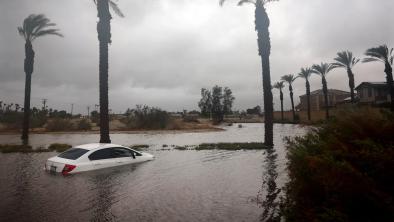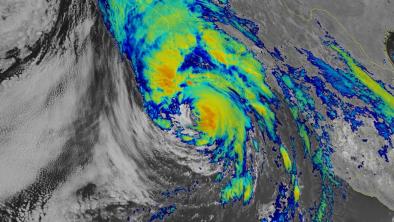Science Source
Quantifying the sensitivity of maximum, limiting, and potential tropical cyclone intensity to SST: Observations versus the FSU/COAPS global climate model
- States that previous research quantified the sensitivity of limiting intensity to SST for observed tropical cyclones (TCs) and for TCs generated by two global climate models (GCMs)
- States that, on average, a 1° C increase in sea surface temperature (SST) is associated with a 7.9 m s−1 increase in the statistical upper limit of observed intensity; conversely, a 1°C increase in SST does not significantly affect the limiting intensity of GCM‐generated TCs
- This study builds on previous research in two ways: (1) A comparison is made between the statistically defined limiting intensity and the physically defined potential intensity, and (2) a test is performed on the ability of a ∼0.94° resolution GCM to reproduce the observed statistical relationship between potential intensity and SST
- Uses data from NASA's Modern Era Reanalysis to approximate the observed sensitivity of potential intensity to SST for the 1982–2008 time period
- Results indicate that the sensitivity of potential intensity to SST is not statistically different from the sensitivity of observed maximum or limiting intensity to SST
- This result links the statistically defined sensitivity to the physically based theory of hurricanes
- Estimates potential intensity from the FSU/COAPS GCM, which reproduces the observed sensitivity of potential intensity to SST (though it does not capture the observed sensitivity of TC maximum or limiting intensity to SST)
Related Content
Science Source
| Scientific Reports
Observed increases in North Atlantic tropical cyclone peak intensification rates
Andra J. Garner
Headline

Aug 22, 2023 | Climate Nexus Hot News
Hilary Breaks 'Virtually All Rainfall Daily Records'
Headline

Aug 22, 2023 | Climate Nexus Hot News
First SoCal Tropical Storm Since '39 Drops Years Worth Of Rain
Headline

Jun 14, 2023 | Climate Nexus Hot News
Heat Stifles Bangladesh Tea Pickers, India/Pakistan Prep For Cyclone


